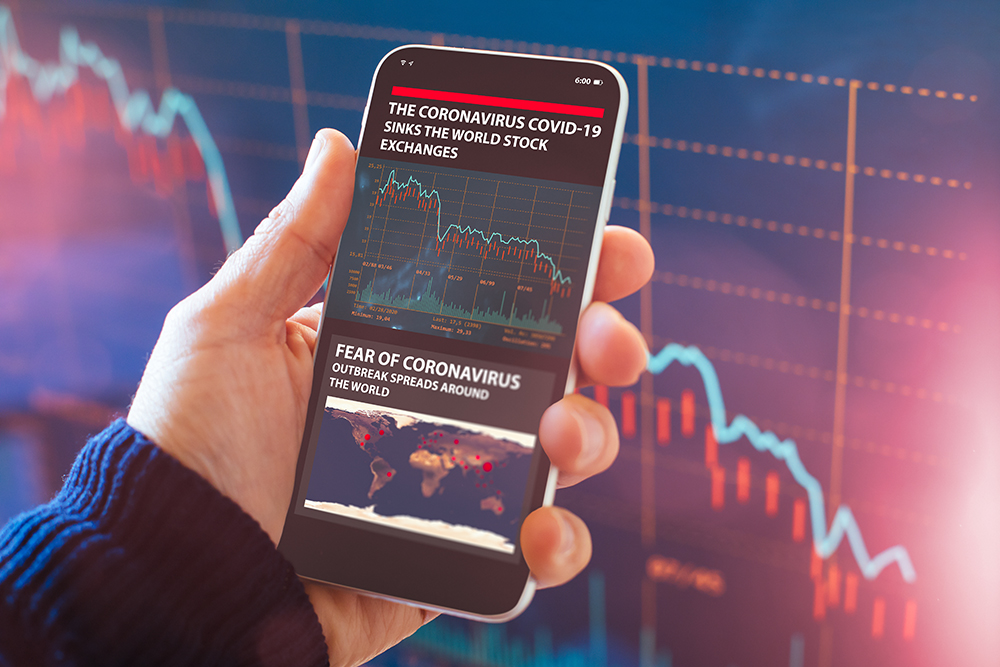
Equity Market Update 3/26/20
Readers of our reports over the past few years know that we have described the condition facing investors as a bet. Older market veterans who have lived through a number of market cycles would tend to bet on what has always ultimately played out– that the equity markets would eventually revert to their historically normal level of valuations from the extremes of overvaluation that have characterized the past few years. On the other hand, investors who have joined the fray within the past two decades have been tempted to bet on the Fed and other major central bankers’ ability to keep stock prices elevated well above traditional valuation levels. After all, until February, the Fed had an unblemished record at turning prices up every time they threatened a meaningful decline in the past decade.
Beginning in mid- February, as it has become progressively clearer that the Coronavirus is going to have a severely negative impact on domestic and worldwide economies and corporate earnings, stock prices plummeted in the fastest ever 35% decline from an all-time high. Investor fear increased when the Fed made the extremely unusual Sunday inter-meeting announcement that it was dropping its short-term interest rate by a full 1% back to the zero bound and then Monday saw the stock market fall by the most since the Crash of 1987. It began to appear that central bankers had lost control of market prices. The decline bottomed on Monday of this week as the Fed, the President and Congress promised unprecedented monetary and fiscal aid. In the past three days, the S&P 500 has jumped a resounding 15%, lending evidence that abandoning confidence in central bankers might be premature.
Today alone was remarkably instructive. When I tuned into the markets about 5:15 a.m., the Dow Jones futures were down more than 500 points. Adding to the gloom, the government announced that more than 3.8 million workers filed for unemployment benefits last week, more than four times the previous one-week record of 695 thousand. Along with assurances from Congressional sources that fiscal help was coming, Fed Chair Jay Powell made a surprising appearance on the Today show and proclaimed that the Fed was by no means out of ammunition and that it would never be out of ammunition. Investors took heart and pushed markets up by more than 6% today. The Dow did more than an 1,800-point turnaround from its early morning lows. Perhaps faith has returned to the potency of the Fed.
This morning, Ned Davis Research profiled its recent study of market reactions after waterfall declines. They identify six such declines in the past half century. Rallies following waterfall declines have universally been strong, averaging 15% over 18 market days. In the current instance, the S&P 500 has bounced over 17% in just three market days. It is not terribly surprising to see a more dramatic rally after an unprecedented decline off an all-time high. The research also shows that waterfall declines almost always see a retest of the lows after the initial rally with the waterfall lows broken nearly 70% of the time.
Of course, we can’t know with any degree of certainty how this episode will play out, but it is clear that investors are once again faced with choosing one side of the bet or the other. As businesses around the world close to prevent the spread of the virus, it is now apparent that economic growth and corporate earnings are declining rapidly. Goldman Sachs’s latest estimate is that the second quarter will show a negative 24% GDP growth reading. No one knows how long the negative economic conditions will remain nor how quickly businesses will rebound when the virus is controlled. At current prices, stocks are still severely overvalued relative to their historic norms, and as sales and earnings decline, the measures of overvaluation will become more extreme. Opposing that negative picture is the biggest ever government rescue effort. It promises to be quite a battle.
By Thomas J. Feeney, Chief Investment Officer

